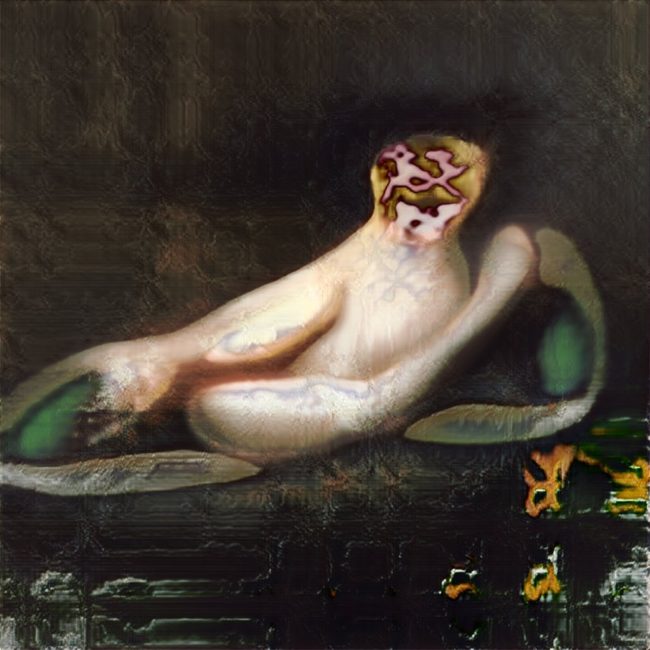
Robbie Barrat‘s AI-generated nude paintings make Francis Bacon look like a genteel pre-Raphaelite [via]

Robbie Barrat‘s AI-generated nude paintings make Francis Bacon look like a genteel pre-Raphaelite [via]
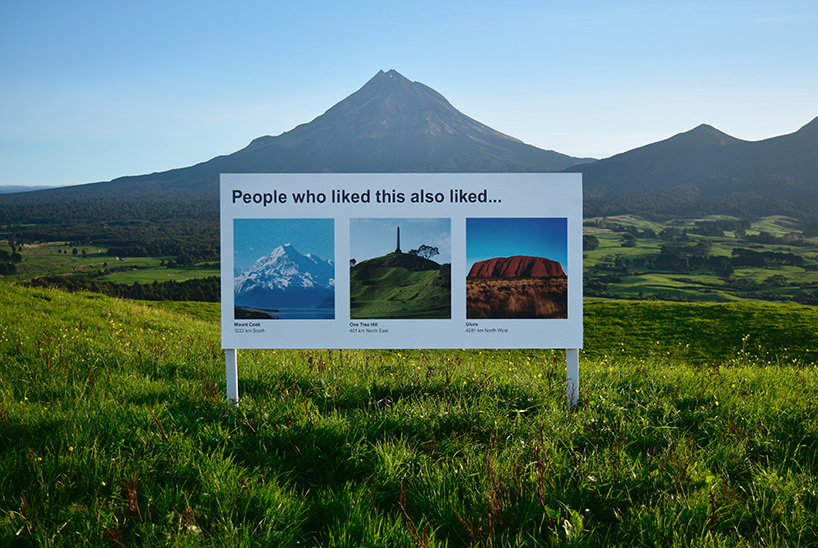
Creative duo Scott Kelly and Ben Polkinghorne have brought omnipresent internet suggestions to real settings with their latest project, ‘signs of the times’.
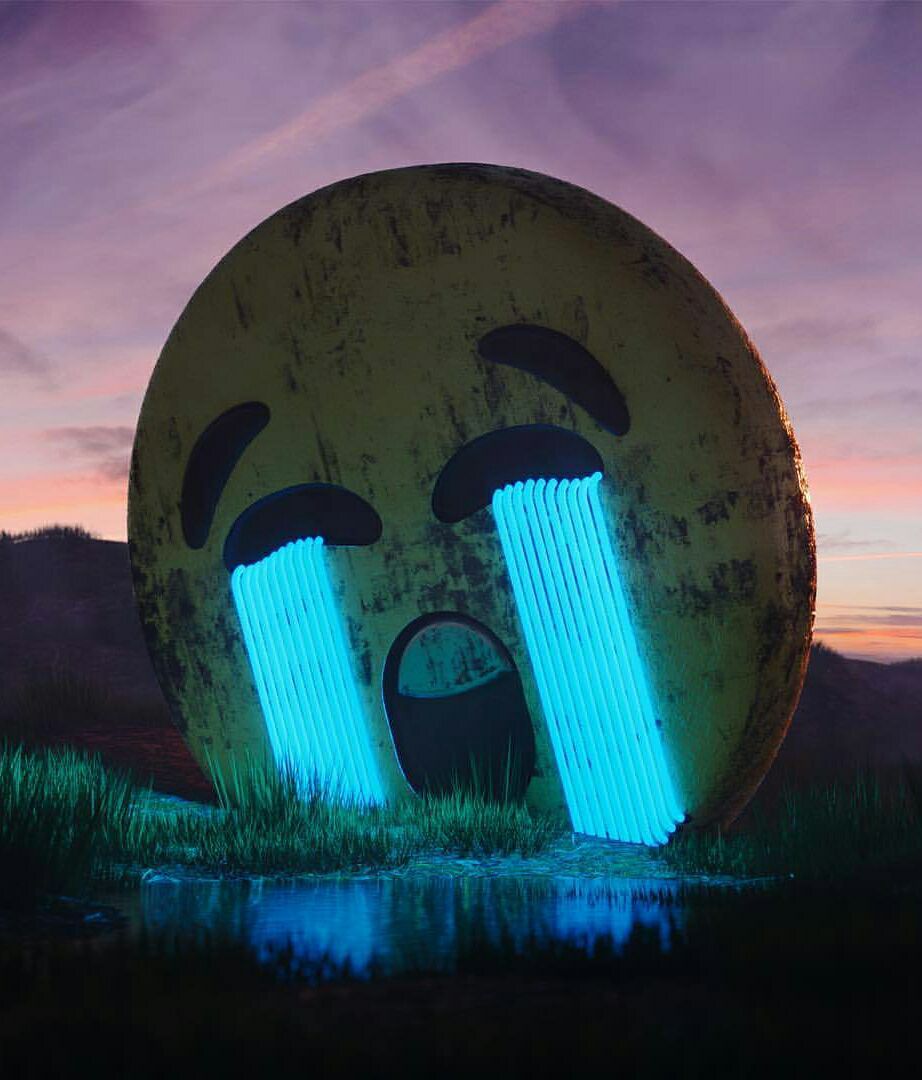
Image by Andreas Johansson Design
New piece by Aram Bartholl for the group show “Odyssey” at Möhnesee.
‘Obsolete Presence’, Arrr…
Dimensions: 200 x 240 cm; Medium: 4C print on forex, wood, mirror, 2017
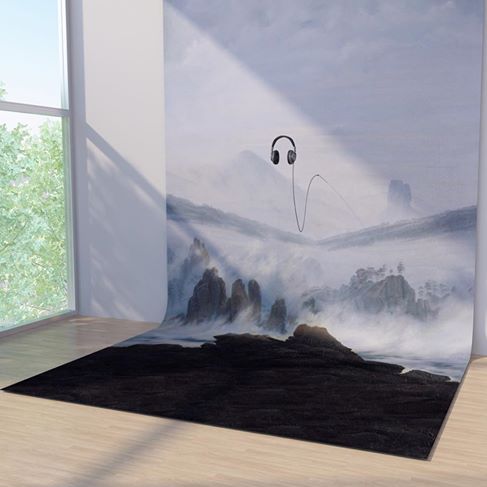
Jordan Tate + Rick Silva, wanderer_over_the_sea_of_fog.mp3
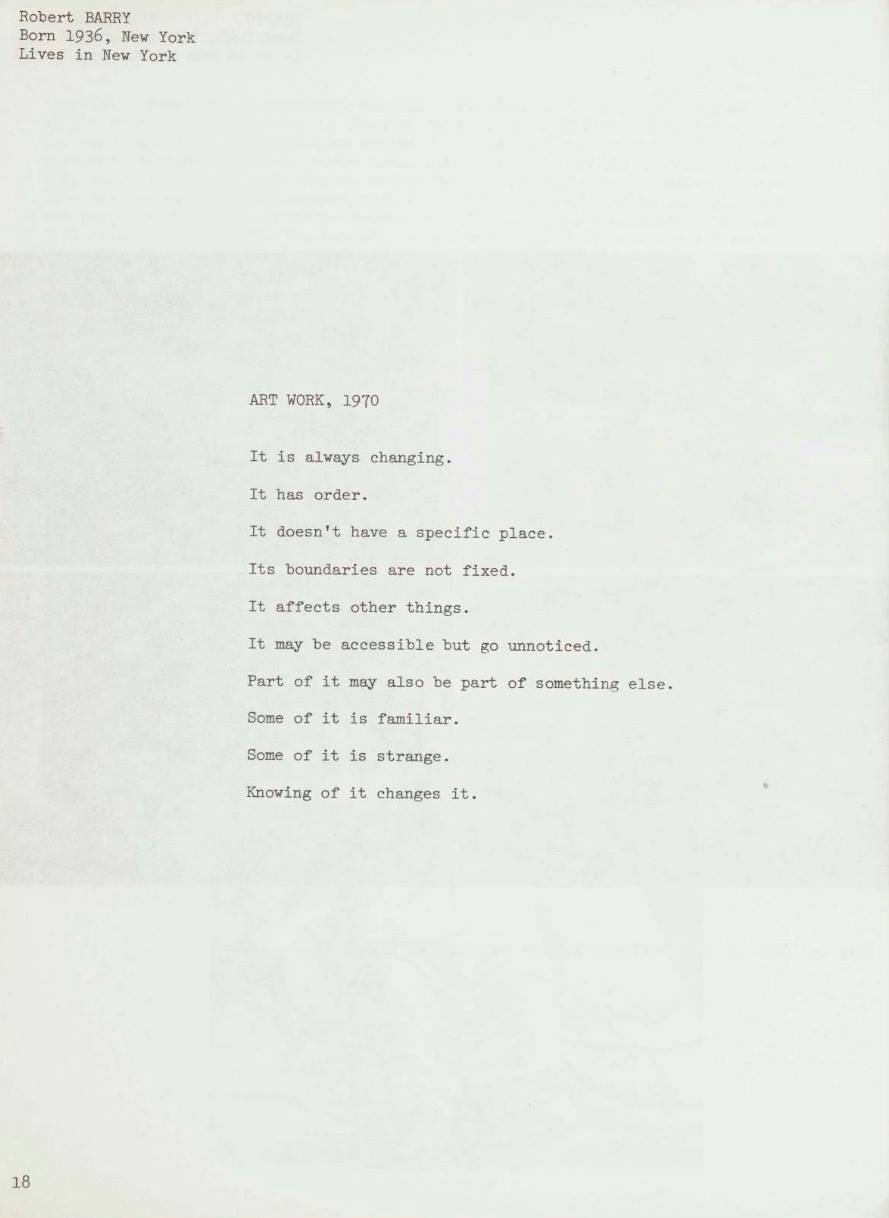
Robert Barry, Art Work (from the “Information” exhibition catalogue, MoMA, New York, 1970)
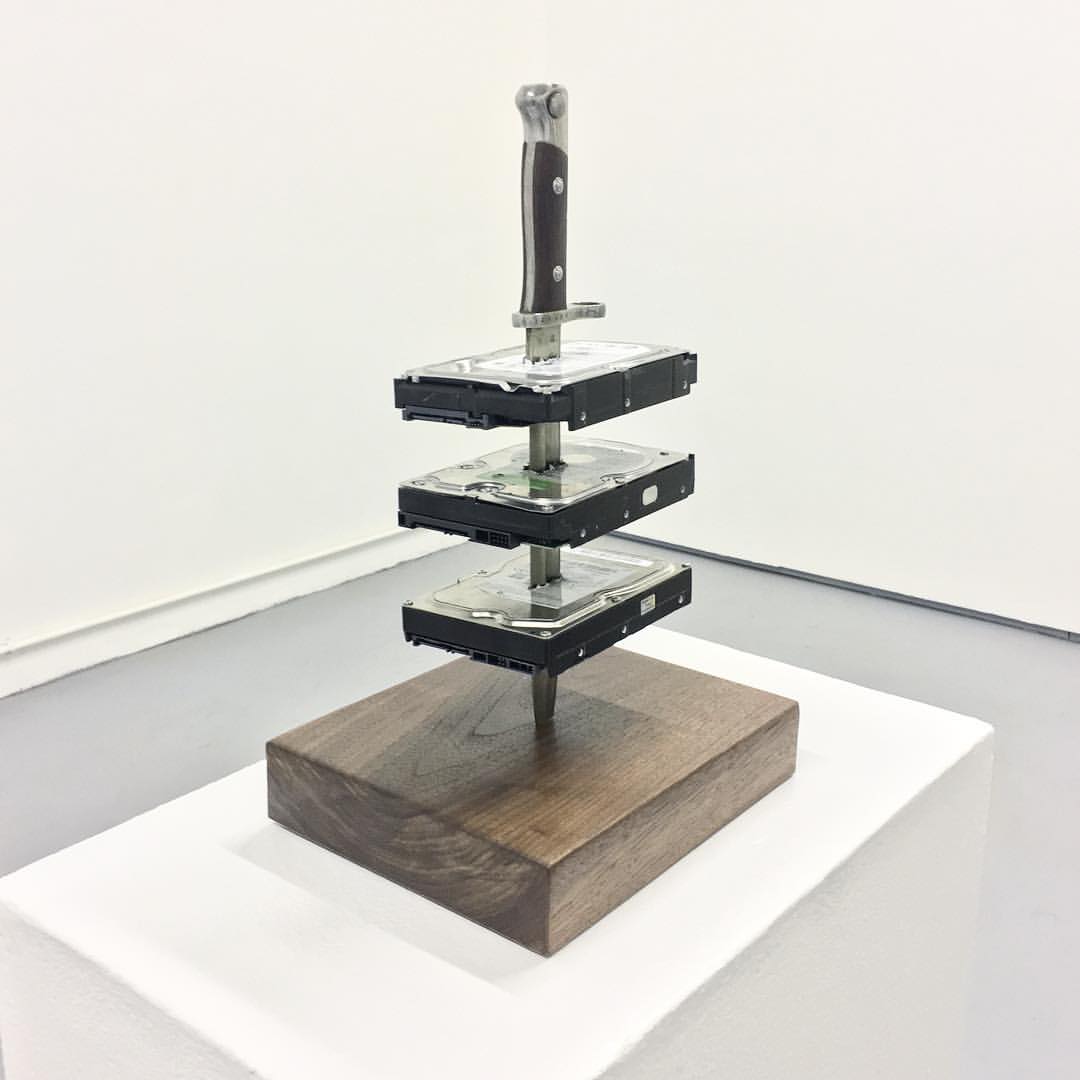
DeathOS, a solo exhibition by Zack Dougherty at Ditch Projects in Springfield (OR)
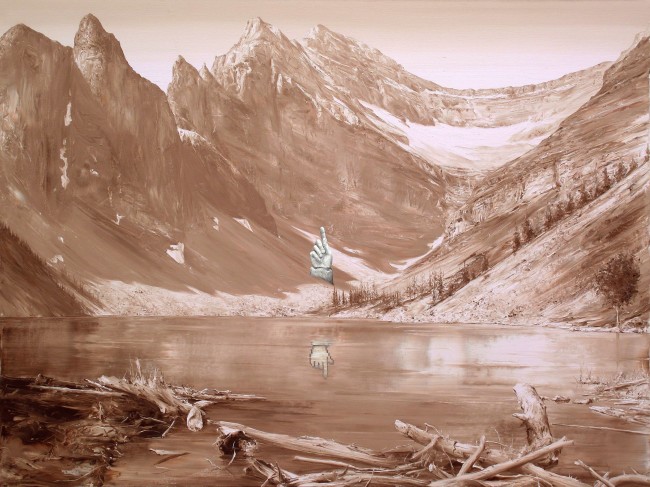
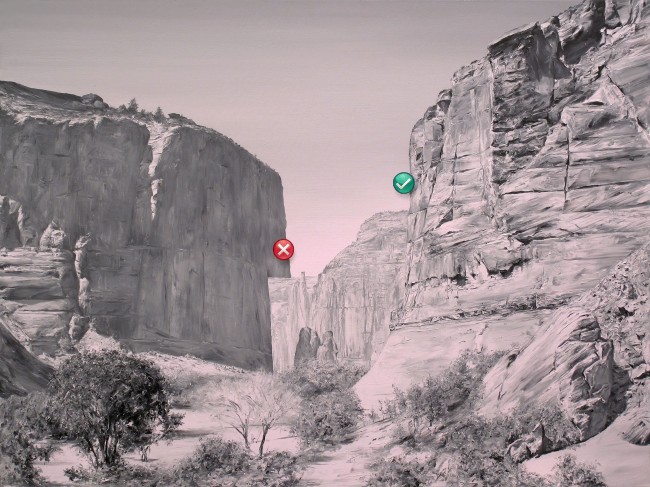


Amazing paintings by Paco Pomet…
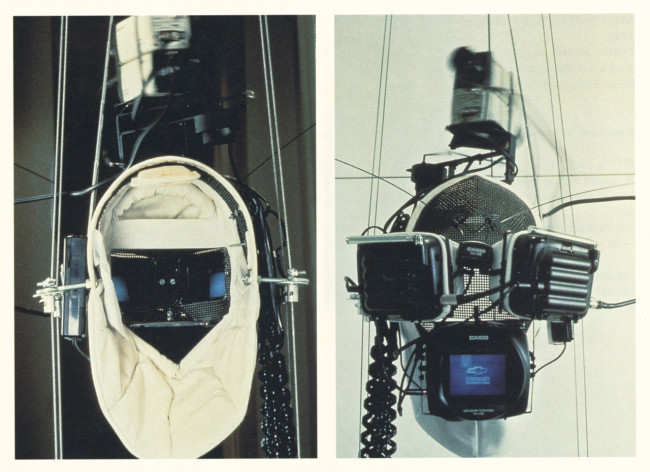
Vito Acconci, Virtual Intelligence Mask, 1993
“A conventional fencing mask is used as a support-structure-for electronics; the electronics are used as contact with the world outside.
On the front of the mask are three televisions: one larger television facing out, and two miniature televisions facing in. The miniature televisions, facing in, cover the eyes of the person wearing the mask; from an outsider’s point of view, the person inside the mask is blindfolded by the two televisions. At one side of the mask is a small portable radio, positioned at the ear of the person wearing the mask; the radio’s speaker is directed out.
On top of the mask are two surveillance cameras, one on top of the other, one directed toward the front and one directed toward the rear. The cameras mechanically rotate, side to side.
The person wearing the mask sees his/her environment on the two television screens in front of his/her eyes: one—screen shows what’s going on in front of the person, the other shows what’s going on behind.
In the meantime, the larger television, and the radio, are available for use by passers-by: a passer-by can switch TV channels, a passer-by can change from one radio station to another. A passer-by can, literally, ‹dial› the person wearing the mask; a passer-by can, literally, ‹turn the person on.›”
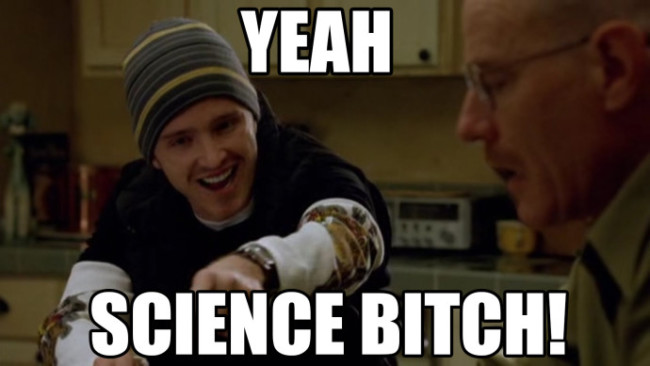
A pilot study from a group of Dutch scientists implies that being told that an image is an artwork automatically changes our response, both on a neural and behavioural level.
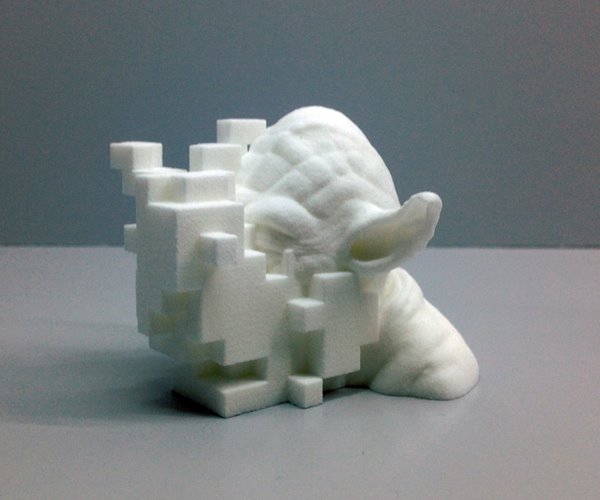

MATERIAL WANT is the first collaboration of Matthew Plummer-Fernandez and JODI. Bringing together their respective practices, they explore hybridisations of algorithms, errors, Internet found objects and digital fabrication. The result of this joint effort? A series of 3D-printed sculptures, uncanny, yet familiar objects, between incongruous assemblages and distorted reality.
Robert Rushkin: my new (non-existent) favourite artist. Video by The Builders Club…
Red is an Audio Visual art object by vtol is a homemade projector with a robotic controlled flexible lens which cam produce abstract light visuals…
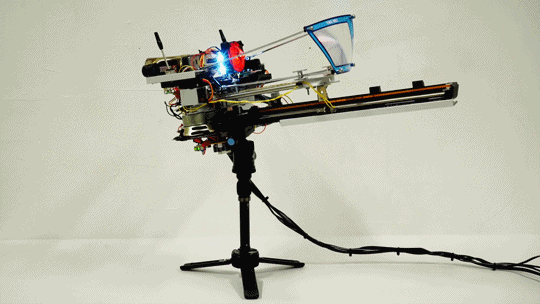
“Don’t go unnoticed. Follower is a service that grants you a real life Follower for a day. A no-hassle unseen companion. Someone that watches, someone that sees you, someone who cares.”
a project by Lauren McCarthy
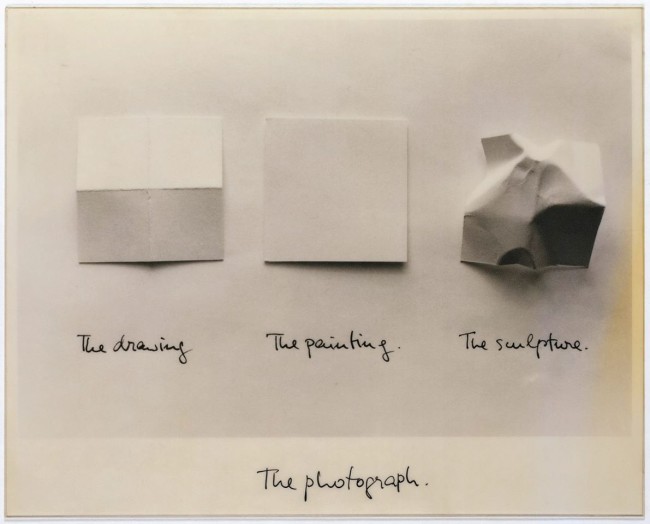
Luis Camnitzer, “The Photograph“, 1981

João Ferro Martins, London Brick, 2011
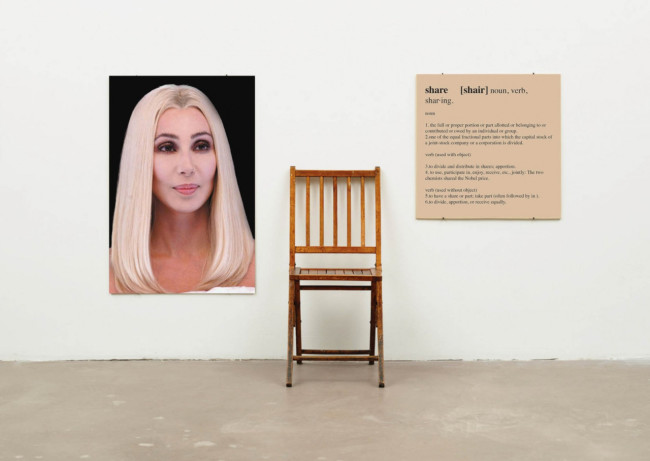
Ole Ukena, Cher, Chair, Share (Hello, Joseph), Poster of the singer Cher, a chair, a printed definition of the word share / 220 x 175 cm / 2011
The power of language can both separate us and bring us together. This piece, which is based on Joseph Kosuth‘s masterpiece Three and One chairs from 1965, playfully capitalizes on linguistic similarities while highlighting cultural absurdities bringing about the question: could a pop icon, place to rest and a single noun have anything in common/share common ground? In this work the intended act of misinterpretation becomes the actual act of artistic creation.
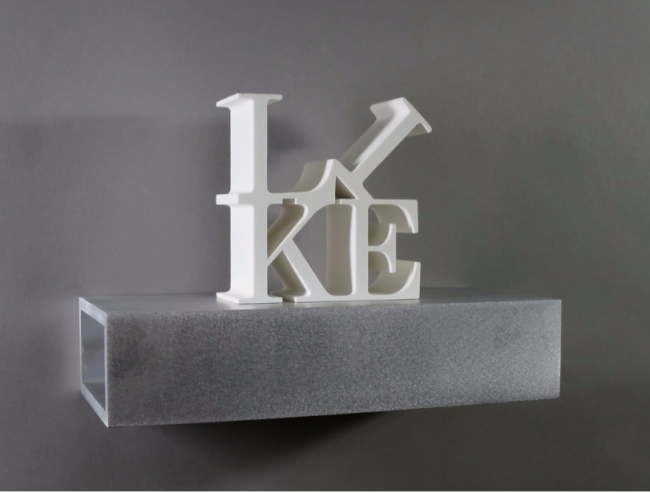
Sam Nichols, Like, 2014
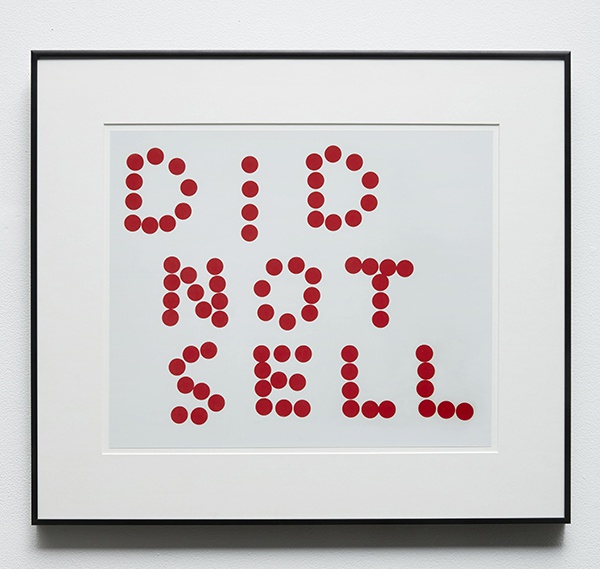
John Waters, “Beverly Hills John” at Sprüth Magers, London
Why is a Raven Like a Writing Desk? from Gene Kogan on Vimeo.
A reanimation of the tea party & riddle scene from Alice in Wonderland (1951), restyled by 17 paintings.
Created with code by Justin Johnson, based on the paper on style transfer from Gatys, Ecker, and Bethge at the University of Tübingen in Sep 2015.
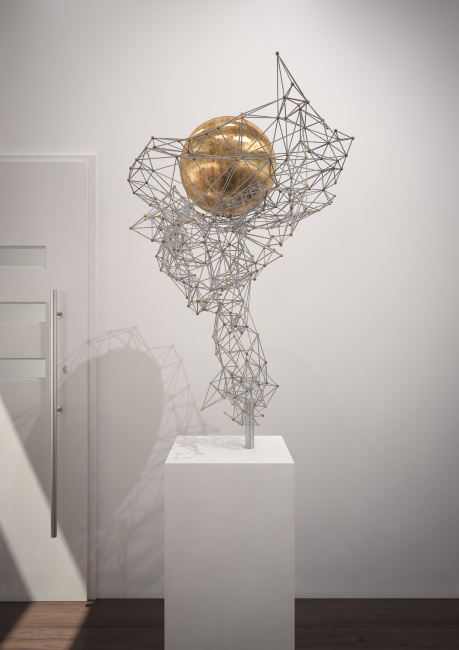
“Sculpture based on an algorithmic interpretation of the relationship between individuals tagged in a Facebook flyer for a salsa themed evening event”. By Kim Laughton.
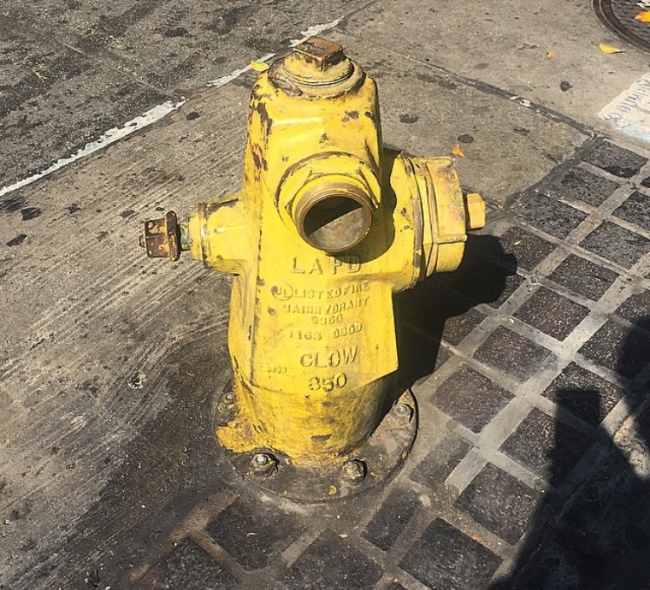
Last February, artists David OReilly and Kim Laughton created a blog called #HyperRealCG, in which they post banal photographs and then claim that they’re CG. Pretty much every tech blog falled for it.
This project by Pablo Garcia uses anamorphosis to add visual symbols to selfie-stick photography…
[via]
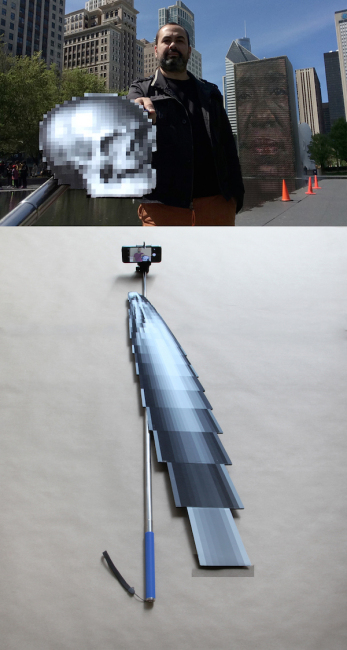
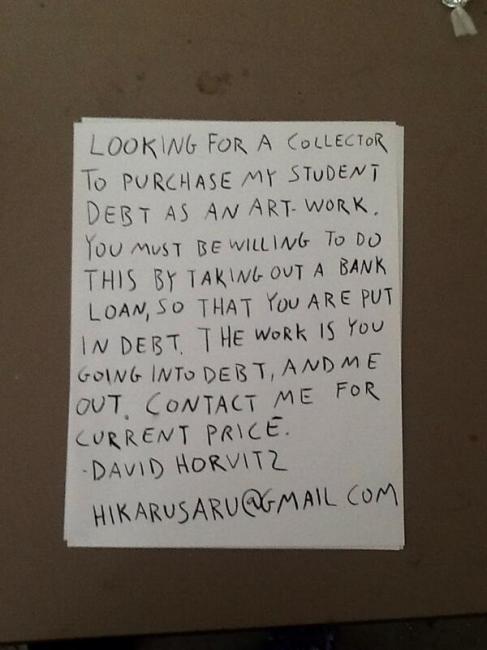
Student Debt by David Horvitz